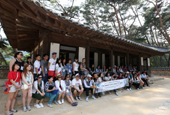These milestones throughout a monarch's life were recorded with illustrations and writings, as well.
The collection of these records is called the "Uigwe," a vast, detailed record of the minutiae of royal rituals and ceremonies, from the beginning to the end of the kingdom and covering all 518 years and 27 monarchs. These records represent Joseon-era's royal “archival culture.”
In June, 2007, the "Uigwe" was recognized for its historical value and was listed in UNESCO’s Memory of the World Register as the "Uigwe: The Royal Protocols of the Joseon Dynasty."
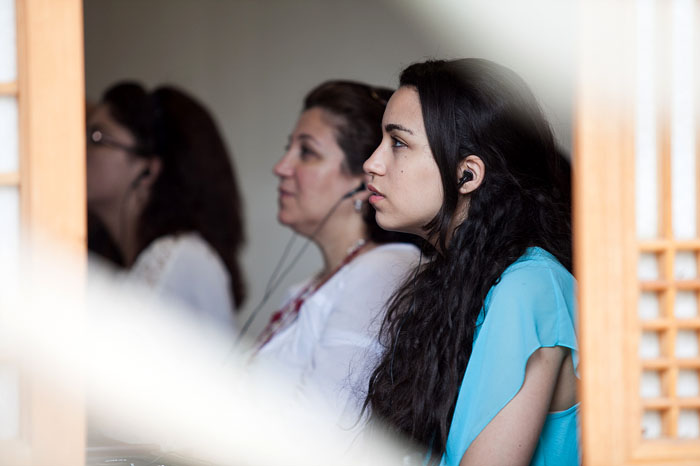
Family members of Tunisian Ambassador to Korea Mohamed Ali Nafti listen to a lecture on the protocols of the Joseon royal house, "Uigwe," at the Mugyewon, a traditional culture promotion center in Seoul, on June 21.
The Korean Culture and Information Service (KOCIS), part of the Ministry of Culture, Sports and Tourism and publisher of Korea.net, hosted a lecture tour on June 21 to give a group of Seoul-based non-Koreans a rare, special glimpse into the former royal family's rich archives.
Participants included ambassadors from Turkey and Tunisia, as well as foreign students and teachers from 15 countries.
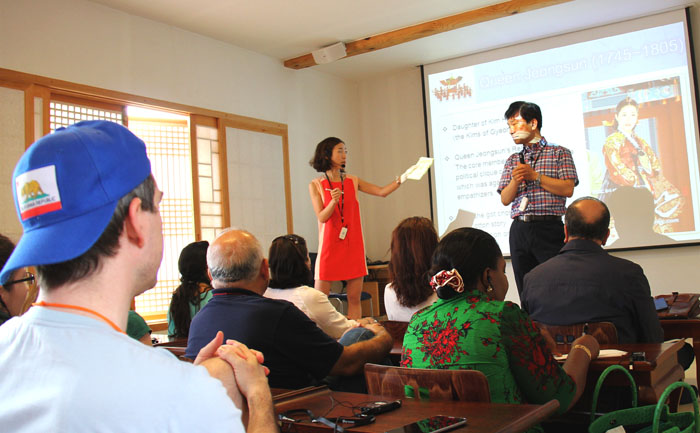
Participants listen to stories embedded in the Joseon-era documentary text, the "Uigwe," from Konkuk University Professor Shin Byung-ju, on June 21.
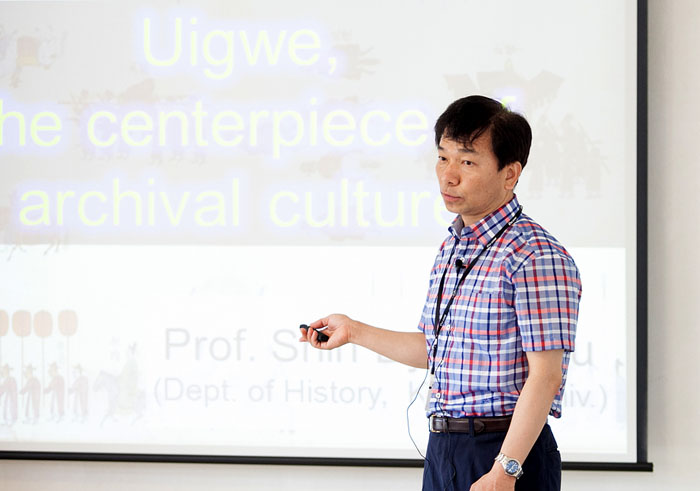
Konkuk University Professor Shin Byung-ju gives a lecture on the Joseon-era records of royal ceremonies and rituals, the "Uigwe."
Meeting at the Mugyewon in central Seoul, a traditional culture promotion center, participants began with a lecture. Professor Shin Byeong-ju of Konkuk University spoke about the way in which the collection of "Uigwe" were gathered, as well as on the way in which the illustrations and the writings featured in the records show how major royal events were observed during the dynasty, such as wedding ceremonies, funerals, royal families' 60th birthday celebrations and ceremonies in honor of diplomatic visits.
Thanks to the professor’s lecture, participants learned the answer to the question, “Why were such 'Uigwe' documents recorded and preserved to this day?” It was to pass down to future generations the way in which royal rituals were prepared and executed.
The collection includes both illustrations that show how to conduct royal ceremonies and documents that show how to divvy up duties, as well as lists of people and props needed for certain ceremonies.
It is as if our ancestors were making a documentary, using ancient technology, to record every step and action taken during the rituals.
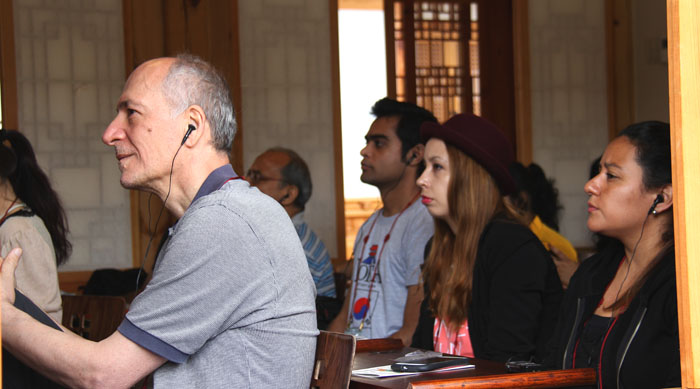
Participants in the lecture tour listen to a lecture about the "Uigwe."
After the lecture, participants were bused to the Kyujanggak Institute at Seoul National University (SNU), an archive center that houses the quintessence of the dynasty's documentary heritage.
The Kyujanggak was the royal library. It was founded in 1776 by order of the dynasty’s 22nd monarch, King Jeongjo (r. 1776-1800), at the very time he ascended the throne.
The library functioned as a key repository for historical royal records, including the genealogy of the royal families and the royal coat of arms. At the time of the 1945 liberation from Japanese colonial rule, all the annals were relocated to where they are now, at the SNU archives.
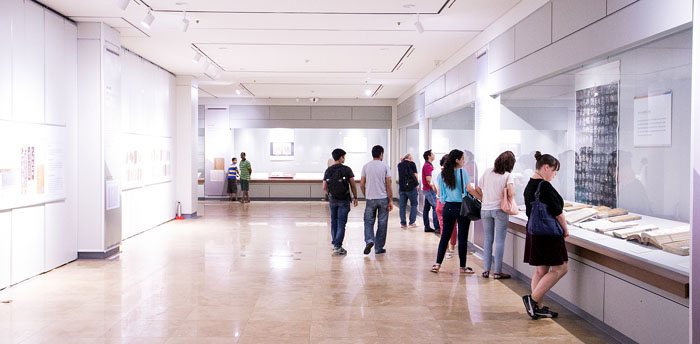
Participants observe the historical records of the Joseon Dynasty, on display at the Kyujanggak Institute at Seoul National University on June 21.
The group seemed in awe as it got a glimpse into all sorts of archival collections dating back to the Joseon era.
“It’s been one and a half years since I came here as ambassador to Korea. This is my second time to visit the archives,” said Tunisian Ambassador Mohamed Ali Nafti. “Now that I’ve learned through the lecture more about the stories behind how these collections were recorded and have been stored all those years, I can get a better understanding of the history here, seeing all the records, in person.”
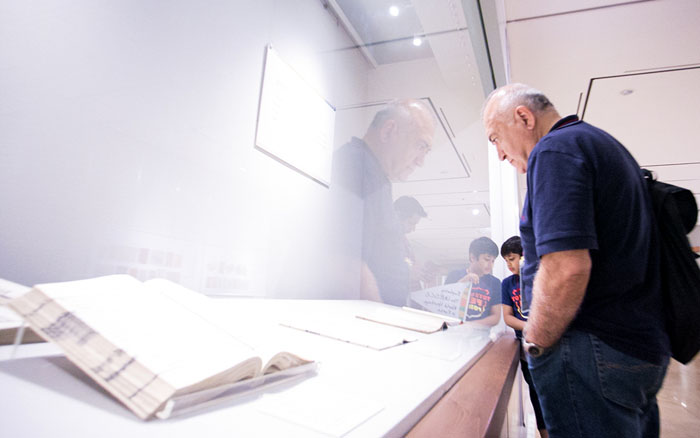
Turkish Ambassador to Korea Arslan Hakan Okcal studies the "Uigwe" collections from the Joseon Dynasty at the Kyujanggak Institute at Seoul National University.
“As I was told during the lecture, I found out that a direct portrayal of the king is nowhere to be found in these illustrations,” said Abdul Qayyum, a Pakistani student at Sungkyunkwan University. “Other people involved in royal ceremonies are depicted in such a vivid manner that I can see their facial hair, but due to the rules, which I learned about during the lecture, nobody was allowed to depict any king in the 'Uigwe.' I can see that now. It’s very interesting,” he added.
Among the collections are records of the ceremony to mark the 60th birthday of Queen Heongyeong, King Jeongjo’s mother. The records trace the whole process of the birthday ceremony, held in 1795, through as many as eight days and all across the Hwaseong Fortress in Suwon, Gyeonggi-do (Gyeonggi Province).
The venue for the historic eight-day celebration was the fortress now in central Suwon and its surrounding walls, built by King Jeongjo to house his ill-fated father’s grave. The castle played a crucial role in defending the southern sections of Hanyang, the name for the then capital, now Seoul.
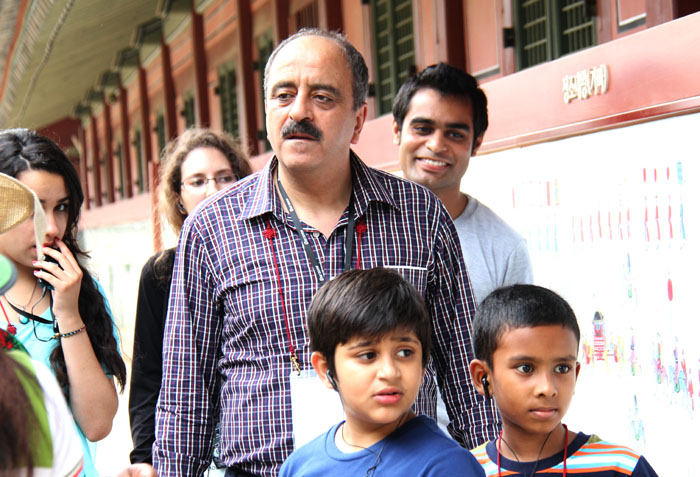
Tunisian Ambassador to Korea Mohamed Ali Nafti (center) listens as the tour guide tells the story behind the Hwaseong Fortress in Suwon, Gyeonggi-do, on June 21.
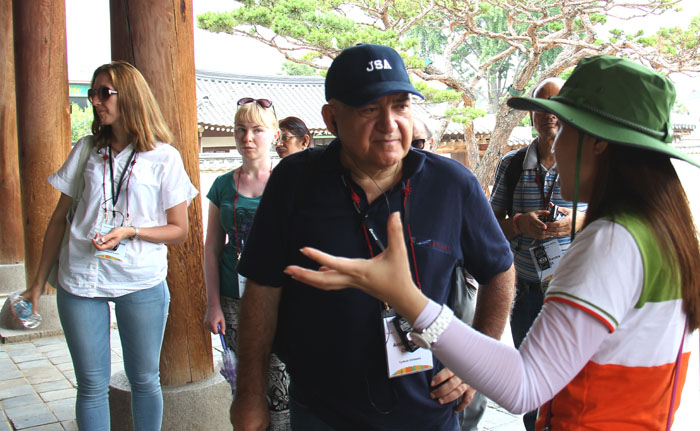
Turkish Ambassador to Korea Arslan Hakan Okcal (center) listens as the tour guide explains about the Haenggung, King Jeongjo’s palace, part of the Hwaseong Fortress in Suwon, Gyeonggi-do.
The entire construction process of the historical fortress was recorded in the "Uigwe," constituting a special ten-volume sub-section of the greater collection. Some parts of the fortress were destroyed by war and floods and were reconstructed afterward. Thanks to the records, they were able to be rebuilt exactly as they were originally. In 1997, the entire fortress was designated as a World Heritage site by UNESCO.
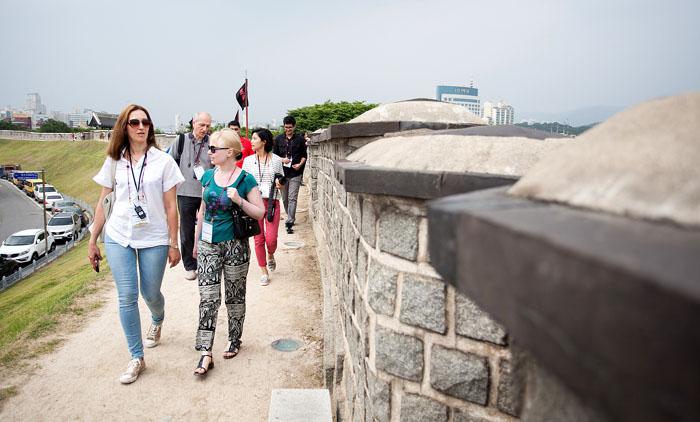
Participants stroll along the Hwaseong Fortress walls in Suwon, Gyeonggi-do, on June 21.
After visiting the SNU archives, the group traveled to the very site itself, a site now home to the finest existing examples of Joseon-era fortress construction. There, the participants learned how the fortress was first constructed, using devices such as a geojunggi, a type of pulley. They saw for themselves the Haenggung, King Jeongjo’s palace, the exact location where the ceremony to mark his mother's 60th birthday was held.
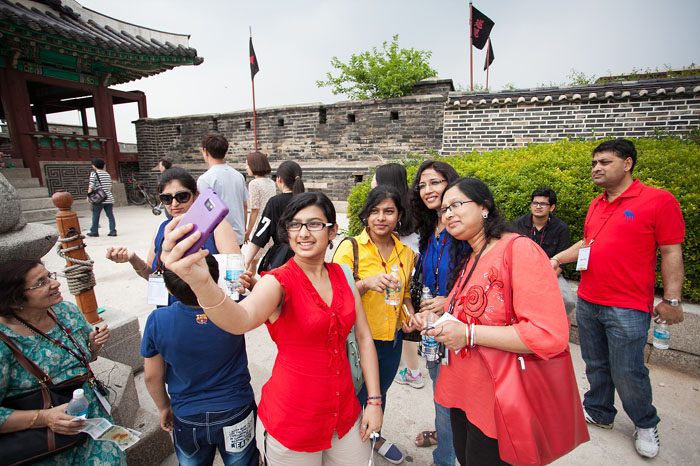
Participants take pictures against the backdrop of the Hwaseong Fortress in Suwon, Gyeonggi-do.
“This is where the rich history of the Joseon Dynasty exists,” said Turkish Ambassador to Korea Arslan Hakan Okcal. “I’ve realized that Korea has a rich history. What surprises me is that the country has had its history handed down to it by generations of ancestors and it has been preserved very well for generations to come.”
Thanks to the lecture and tour, the Turkish ambassador said that he now has a better picture of the way in which people of that time lived and how they prepared and hosted important royal ceremonies. “I really had fun and learned a lot,” he said with a smile.
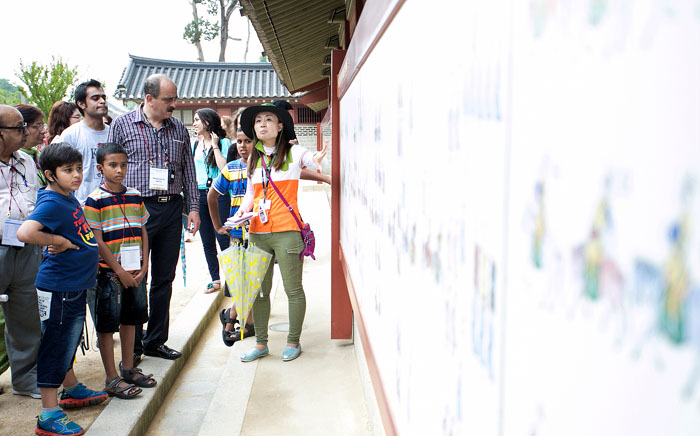
Participants listen as the tour guide explains the historical records that outline the 60th birthday celebration for King Jeongjo’s mother, at the Hwaseong Fortress in Suwon, Gyeonggi-do.
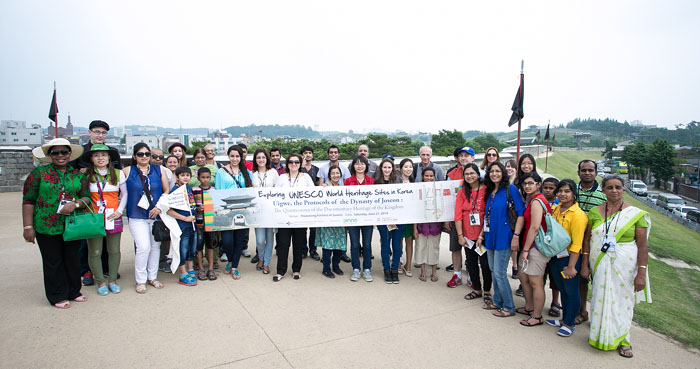
Participants in the UNESCO tour program pose for a group photo along the ramparts of the Hwaseong Fortress in Suwon, on June 21.
The host of the program, KOCIS, runs a series of programs aimed at offering non-Korean residents of Korea the chance to explore Korea’s UNESCO World Heritage sites and traditions.
The year-round program will bring a select group of travelers to other heritage sites across the country, including the Andong Hahoe folk village, the Buddhist temple at Bulguksa and the Seokguram Grotto, both in Gyeongju.
More information about the program can be found at the website below.
http://www.heritageinkorea.kr/main.do
By Sohn JiAe
Korea.net Staff Writer
jiae5853@korea.kr
